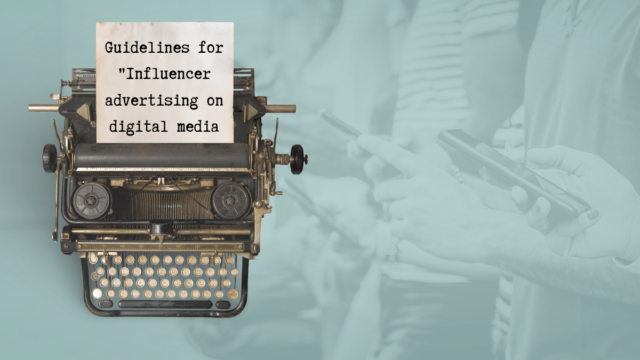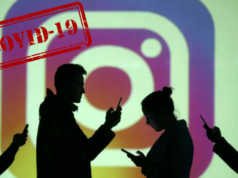As digital media becomes increasingly pervasive and more consumers start to consume advertising on various digital platforms, it has become important to understand the peculiarities of these advertisements and the way consumers view them. With lines between content and advertisements becoming blurry, it is critical that consumers must be able to distinguish when something is being promoted with an intention to influence their opinion or behaviour for an immediate or eventual commercial gain. Consumers may view promotional messages without realising the commercial intent of these, and that becomes inherently misleading, and in violation of clause 1.4 (misleading by omission) and 1.5 (abuse trust of consumers or exploit their lack of experience or knowledge) It has also become necessary to update the definition of certain terms as they relate to advertising regulation and guidelines in the changed scenario
ADVERTISEMENT
An advertisement is defined as a paid-for communication, addressed to the public or a section of it, the purpose of which is to influence the opinions and/or behavior of those to whom it is addressed. Any communication which in the normal course may or may not be recognized as an advertisement by the general public, but is owned or authorized by the advertiser or brand owner would be included in the definition. Explanation: An Advertisement shall be “Owned or Authorized” by an advertiser when there is a material connection with the publisher of the Advertisement
Material Connection and payment
Any connection between an entity providing a product or service and an endorser, reviewer, influencer or person making a representation or publishing the communication that may affect the weight or credibility of the representation, and that could include benefits and incentives, such as monetary or other compensation, free products with or without any conditions attached, discounts, gifts, contest and sweepstakes entries, and any employment relationship. Examples of a material connection or payment could be free products including those received unsolicited, direct monetary exchange, trips or hotel stays, media barters, coverage, awards, with the expectation—explicit or implied—that promotion or inclusion of the advertiser’s products in a post occurs immediately or eventually
DIGITAL MEDIA
Internet (advergames, sponsored posts, branded content, promotional blogs, paid-for links, gamification, in-game advertising, teasers, viral advertising, augmented reality, native advertising, connected devices, influencers, etc.) On-demand across platforms including Near Video On Demand, Subscription Video On Demand, Near Movie On Demand, Free Video. On-Demand, Transactional Video On Demand, Advertising video on demand, Video On Demand, Pay Per View etc. Mobile broadcast, mobile, communications content, websites, blogs, apps, etc. Digital TV (including Digital Video broadcasting0 Handheld and terrestrial) etc. NSTV (non-standard television) DDHE (digital delivery home entertainment)
MEDIA OWNERS
Media owners include organizations or individuals in effective control of the management of media or their agents. Media are any means used for the propagation of advertisements and include press, cinema, radio, television, hoardings, hard bills, direct mail, posters, internet, digital etc.
INFLUENCER
An Influencer is someone who has access to an audience and the power to affect their audience’s purchasing decisions or opinions about a product, service, brand or experience, because of the influencer’s authority, knowledge, position, or relationship with their audience, An influencer can intervene in an editorial context or in collaboration with a brand to publish content.
For advertisements on digital media to be honest and not violate ASCI chapter 1 on misleading advertisements, we are creating “Guidelines for Influencer Advertising on Digital Media”.
The What?
A disclosure is a clarification that a piece of communication is an advertisement.
The Why?
An average consumer should be able to recognize that something is an advertisement without having to click or otherwise interact with it. It needs to be clear/obvious, and consumers shouldn’t have to work to figure out whether what they are hearing, viewing, or experiencing is an advertisement,
The How?
By using the disclosure label when a piece of communication is an advertisement.
The When?
The disclosure needs to be made upfront so that the consumer knows that they are viewing or hearing or reading or experiencing an advertisement before they view, hear, read or experience it.
The Who?
The responsibility of the disclosure is upon the influencer or publishing account on which the advertisement is published, as well as the advertiser for whose brand the advertisement is. In the case of a brand using a virtual influencer, the onus of the disclosure is upon the advertiser
Disclosure label options
#ad #collab #promo #sponsored #partnership
No other labels may be used as consumers may not be familiar with short forms or other words to connote advertisements. This list will be periodically reviewed to add any new labels that become popular or recognised by an average consumer as a way to connote promotional communication
Guidelines for Influencer advertising on digital media
1. Advertisements must be obviously distinguishable by the average consumer from editorial and independent user-generated content, to prevent the audience from being confused between the two. Therefore a disclosure label must be added from the list of approved labels. Only permitted disclosure labels will be considered as adequate as consumers may not be familiar with various creative ways in which advertisers and influencers may wish to convey that the said communication is an advertisement. Examples of such advertisements could be paid music promotion in a video, promoting a store or a brand through a post on the influencers media handle
2. The disclosure label used to highlight advertising content needs to be upfront (within the first two lines of any given platform, such that a consumer need not click on see more or have to scroll under the fold), prominent (so people don’t miss it), appropriate for the channel (what can you see and when) and suitable for all potential devices (it needs to be visible regardless of the device used, or platform such as website or app etc.).
3. The disclosure label must be in English or translated into the language of the advertisement in a way that it is well understood by the average consumer who is viewing the advertisement.
4. Blanket disclosures in a profile/bio/about section will not be considered adequate because people visiting the site might read individual reviews or watch individual videos without seeing the disclosure on another page
5. If the advertisement is only a picture post such as Instagram stories or Snapchat, the label needs to be superimposed over the picture and it should be ensured that the average consumer is able to see it clearly.
6. In the case of video not accompanied by a text post, the disclosure label should be superimposed on the video in a manner that is easily visible to the viewer. For videos that last 15 seconds or lesser, the disclosure label must stay for a minimum of 2 seconds. For videos longer than 15 seconds, but less than 2 minutes, the disclosure label stays for 1/3rd the length of the video. For videos which are 2 minutes or longer, the disclosure label must stay for the entire duration of the section in which the promoted brand or its features, benefits etc are mentioned. In live streams, the disclosure label should be placed periodically, for 5 seconds at the end of every minute so that users who see part of the stream can see the disclosure.
7. In the case of audio media, the disclosure label must be clearly announced at the beginning and at the end of the audio.
8. Filters should not be applied to social media advertisements if they exaggerate the effect of the claim that the brand is making- eg. makes hair shinier, teeth whiter etc.
9. The influencer must do their due diligence about any technical or performance claims made by them such as 2X better, effect lasts for 1 month, fastest speed, best in class etc. Evidence of due diligence would include correspondence with the advertiser or brand owner confirming that the specific claim made in the advertisement is capable of scientific substantiation.
10. It is recommended that the contractual agreement between advertiser and influencer carries clauses pertaining to disclosure, use of filters as well as due diligence
Timelines
Feedback on draft influencer advertising guidelines is invited until the 8th of March, 2021 Based on the feedback and inputs, the final guidelines will be issued by ASCI by 31st March, 2021 The influencer advertising guidelines will be applicable to all promotional posts published on or after 15th April 2021
Complaint Handling
ASCI will issue a notice to both brand owner and influencer for violation of any guideline in the case of a consumer complaint or suo motu cognisance of a potentially objectionable advertisement. In the case of disappearing posts, a screenshot with timestamp would suffice as prima-facie evidence of the advertisement having been published
Know when to Label
– Is this post an ad for your product/ service/ event/ contest/prize run by you?
– Have your received or will receive payment/ barter for promoting a product, service or brand in this post
– Have you included a discount code/ hyperlink whereby you get a commission on clicks or sales generated via this link or code?
– Has any brand commissioned or authorized this communication
– Have you or will you receive a free product/ service/ incentive/hospitality/free trip/discounts or any other benefits for making this post?
Ready reckoner for specific media channels
INSTAGRAM
The disclosure label to be included in the text that shows. If only the image/video is seen, the image/video itself must include the label eg reels, insta stories
FACEBOOK
Include the disclosure label in the title of the entry or post. If only the image/video is seen, the image/video itself must include the label eg FB story
TWITTER
Include the disclosure label or tag at the beginning of the body of the message as a tag
PINTEREST
Include the disclosure label at the beginning of the message.
YOUTUBE
YouTube and other video platforms Include the label in the title / description of the post.
VLOGS
Overlay the disclosure label while talking about the product or service
SNAPCHAT
Include the disclosure label in the body of the message in the beginning as a tag.
BLOGGER
Include the disclosure label in the title of the post
What’s in it for you?
Responsible brands like responsible influencers
Join the league of responsible advertisers
Protect yourself by disclosing upfront what the intent of your post is. That way you and the advertiser both share the onus of your posts in case of a consumer complaint
Your success depends on your audience’s trust in you. Being responsible will increase this trust over time.
With great influence, comes great responsibility












Your article helped me a lot, is there any more related content? Thanks!
Simply wanna admit that this is handy, Thanks for taking your time to write this.
Great post. I was checking constantly this blog and I’m impressed! Very helpful info specially the last part 🙂 I care for such info much. I was seeking this certain information for a very long time. Thank you and best of luck.
маркетплейс аккаунтов соцсетей маркетплейс аккаунтов соцсетей
магазин аккаунтов маркетплейс аккаунтов
площадка для продажи аккаунтов платформа для покупки аккаунтов
услуги по продаже аккаунтов https://prodat-akkaunt-online.ru/
маркетплейс аккаунтов соцсетей магазин аккаунтов
маркетплейс аккаунтов маркетплейс аккаунтов
Ready-Made Accounts for Sale Account market
Accounts marketplace Accounts market
Marketplace for Ready-Made Accounts Account trading platform
Website for Buying Accounts Account Buying Platform
Account Trading Service Account Trading
Account Sale Account trading platform
Account Store Account Purchase
Sell accounts Account Store
Account Buying Service Website for Buying Accounts
Profitable Account Sales Gaming account marketplace
buy accounts accountsmarketplaceonline.com
account sale online account store
account trading account sale
account trading platform buy accounts
account trading platform account trading platform
account exchange https://buycheapaccounts.com
website for buying accounts gaming account marketplace
account exchange service profitable account sales
sell accounts accounts-marketplace.org
account acquisition account marketplace
secure account purchasing platform account buying service
ready-made accounts for sale social media account marketplace
sell pre-made account buy pre-made account
account trading service account trading
purchase ready-made accounts account trading platform
accounts market buy pre-made account
secure account sales sell account
account exchange service sell account
account buying platform accounts market
gaming account marketplace account market
website for selling accounts account selling service
buy accounts profitable account sales
verified accounts for sale ready-made accounts for sale
website for buying accounts accounts marketplace
sell account https://buy-best-accounts.org
account market https://social-accounts-marketplaces.live
database of accounts for sale https://accounts-marketplace.live/
verified accounts for sale https://buy-accounts.space
Este site é realmente incrível. Sempre que acesso eu encontro coisas incríveis Você também vai querer acessar o nosso site e descobrir detalhes! Conteúdo exclusivo. Venha saber mais agora! 🙂
buy account https://buy-accounts-shop.pro
secure account sales https://accounts-marketplace.art/
account selling platform https://social-accounts-marketplace.live/
account market https://buy-accounts.live/
account market https://accounts-marketplace.online
secure account sales https://accounts-marketplace-best.pro/
маркетплейс аккаунтов https://akkaunty-na-prodazhu.pro
продать аккаунт rynok-akkauntov.top
биржа аккаунтов https://kupit-akkaunt.xyz
маркетплейс аккаунтов https://akkaunty-market.live/
маркетплейс аккаунтов https://kupit-akkaunty-market.xyz/
маркетплейс аккаунтов купить аккаунт
площадка для продажи аккаунтов https://online-akkaunty-magazin.xyz/
продать аккаунт https://akkaunty-dlya-prodazhi.pro/
магазин аккаунтов https://kupit-akkaunt.online
cheap facebook advertising account https://buy-adsaccounts.work
buy facebook ad account https://buy-ad-accounts.click
facebook ad accounts for sale https://buy-ad-account.top
buy facebook account https://buy-ads-account.click
buy facebook advertising https://ad-account-buy.top
fb account for sale buying facebook ad account
facebook ads account for sale https://ad-account-for-sale.top
buy a facebook ad account https://buy-ad-account.click
facebook ad account for sale https://ad-accounts-for-sale.work
google ads accounts https://buy-ads-account.top
buy google ads agency account https://buy-ads-accounts.click
buy facebook account https://buy-accounts.click
buy google agency account https://ads-account-for-sale.top
buy aged google ads account https://ads-account-buy.work/
buy aged google ads account https://buy-ads-invoice-account.top
google ads account buy https://buy-account-ads.work
buy google adwords account https://buy-ads-agency-account.top
buy adwords account sell-ads-account.click
google ads agency accounts https://ads-agency-account-buy.click/
buy google adwords account https://buy-verified-ads-account.work
buy facebook bm https://buy-business-manager-acc.org
facebook business account for sale buy-bm-account.org
facebook business manager buy buy verified facebook business manager account
facebook bm account buy https://buy-verified-business-manager.org
facebook verified business manager for sale https://business-manager-for-sale.org/
facebook bm buy buy-business-manager-verified.org
buy facebook business account https://buy-bm.org
facebook bm for sale https://verified-business-manager-for-sale.org/
tiktok ads account for sale https://buy-tiktok-ads-account.org
buy tiktok ads https://tiktok-ads-account-buy.org
buy tiktok ads account https://buy-tiktok-ad-account.org
tiktok agency account for sale https://buy-tiktok-ads-accounts.org
buy tiktok business account https://buy-tiktok-business-account.org
buy tiktok ads account https://buy-tiktok-ads.org
tiktok ads account for sale https://tiktok-ads-agency-account.org
¡Saludos, apasionados del azar !
Casinos online sin licencia con torneos gratuitos – http://www.casinossinlicenciaenespana.es/ casino online sin licencia
¡Que vivas giros inolvidables !
¡Hola, exploradores de oportunidades !
Casinoextranjerosespana.es: sin obstГЎculos para jugar – https://casinoextranjerosespana.es/# casino online extranjero
¡Que disfrutes de asombrosas tiradas exitosas !
¡Saludos, entusiastas del riesgo !
Casinosextranjerosenespana.es – Juegos en vivo – п»їhttps://casinosextranjerosenespana.es/ п»їcasinos online extranjeros
¡Que vivas increíbles jackpots extraordinarios!
¡Hola, aventureros del desafío !
Casino sin licencia y apuestas sin fronteras – http://www.casinossinlicenciaespana.es/ casino online sin licencia espaГ±a
¡Que experimentes premios asombrosos !
c3qrsu
¡Hola, exploradores del azar !
Casino por fuera con pagos cifrados – п»їп»їhttps://casinoonlinefueradeespanol.xyz/ п»їп»їcasino fuera de espaГ±a
¡Que disfrutes de asombrosas tiradas afortunadas !
¡Saludos, aventureros del riesgo !
casinos online extranjeros con licencia europea – https://casinosextranjero.es/# п»їcasinos online extranjeros
¡Que vivas increíbles jackpots extraordinarios!
¡Saludos, fanáticos del azar !
Juegos mГЎs populares en casinos online extranjeros – https://casinoextranjerosenespana.es/# casino online extranjero
¡Que disfrutes de recompensas increíbles !
¡Hola, buscadores de fortuna !
Ranking 2025 de los mejores casinos online extranjeros – https://www.casinoextranjero.es/# casinos extranjeros
¡Que vivas recompensas fascinantes !
¡Bienvenidos, cazadores de tesoros !
Casino fuera de EspaГ±a sin comprometer datos – https://casinoporfuera.guru/# casino por fuera
¡Que disfrutes de maravillosas botes impresionantes!
¡Saludos, cazadores de suerte !
casinosonlinefueraespanol seguros y verificados – https://casinosonlinefueraespanol.xyz/# casinos fuera de espaГ±a
¡Que disfrutes de movidas extraordinarias !
¡Hola, exploradores del azar !
Club VIP en casinos online extranjeros – https://www.casinosextranjerosdeespana.es/ casino online extranjero
¡Que vivas increíbles jackpots sorprendentes!
¡Bienvenidos, participantes del desafío !
Casino fuera de EspaГ±a sin documentaciГіn oficial – п»їhttps://casinofueraespanol.xyz/ casinos fuera de espaГ±a
¡Que vivas increíbles éxitos notables !
?Hola, participantes de juegos emocionantes !
casino online fuera de EspaГ±a con pagos automГЎticos – https://casinosonlinefueradeespanol.xyz/# casino por fuera
?Que disfrutes de asombrosas conquistas impresionantes !
¡Saludos, amantes del entretenimiento y la adrenalina !
Casinoextranjerosdeespana.es – Tu casino desde el mГіvil – https://www.casinoextranjerosdeespana.es/ п»їcasinos online extranjeros
¡Que experimentes maravillosas botes extraordinarios!
¡Hola, descubridores de riquezas !
Casinos sin registro con mГ©todos de pago rГЎpidos – п»їhttps://casinosinlicenciaespana.xyz/ casino online sin licencia
¡Que vivas increíbles recompensas asombrosas !
¡Saludos, aventureros de emociones !
Casino sin licencia con seguridad avanzada – https://audio-factory.es/ casino sin licencia espaГ±ola
¡Que disfrutes de asombrosas movidas excepcionales !
¡Bienvenidos, descubridores de riquezas ocultas !
Mejores casinos sin licencia en EspaГ±a fiables – п»їmejores-casinosespana.es casinos sin licencia espaГ±ola
¡Que experimentes maravillosas momentos inolvidables !
¡Hola, cazadores de riquezas ocultas !
Casino online sin licencia sin procesos largos – http://acasinosonlinesinlicencia.es/ casino online sin licencia espaГ±a
¡Que vivas increíbles victorias memorables !
You should take part in a contest for one of the best blogs on the web. I will recommend this site!
¡Saludos, entusiastas del éxito !
Casino online bono de bienvenida verificado – http://bono.sindepositoespana.guru/# bono.sindepositoespana.guru
¡Que disfrutes de asombrosas momentos irrepetibles !